×
Save 20% On Your Purchase!
Use code SAVE20 at checkout to save on your purchase today from my Herbal Shop!
×
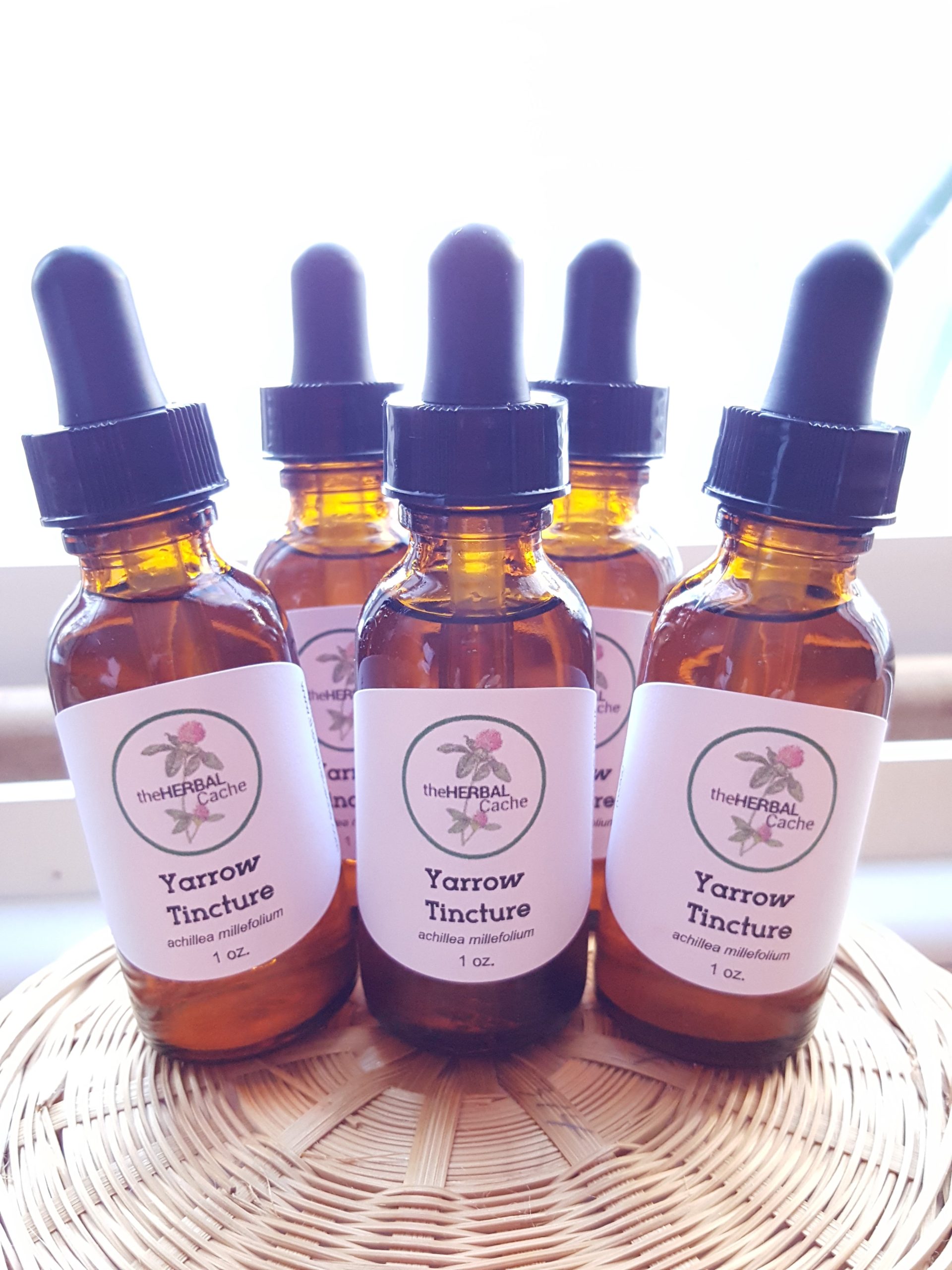
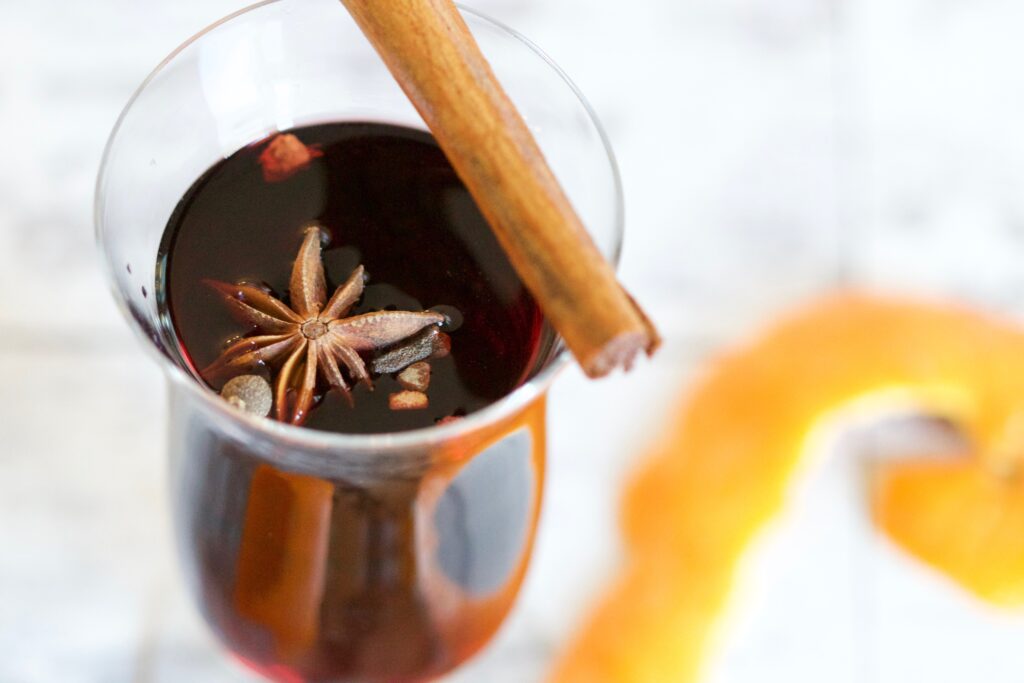
The simple definition of what a mulled wine is, is taking red wine, heating it up and adding spices to it.
But as we all know, we like to “spice” things up and create something with a little more pizzaz. And so the creation of a multitude of mulled wine styles begins.
Variations include adding spices, such as cinnamon, cloves, allspice, anise, and nutmeg. Citrus fruits and raisins can also be added to the mixture to enhance its flavor. And don’t forget other liquors, such as brandy, bourbon and beer are added depending on the recipe.
And there are many more cultures and countries that have some sort of mulled wine.
Mulled wine has a long history, starting back in 20 AD with the Romans.
By the 12th century, forms of mulled wine were very common in parts of Europe, especially in France and Spain. Recipes for this “spicy wine” can be found in written works of the time, like Regiment of Sanitat, written by Arnaud de Villeneuve, a doctor and theologian of the time.
This drink became even more popular in the 13th century, spreading further throughout Europe. The English king, Henry III, was very fond of mulled wine and made sure it was at the table when eating.
As the years went by, mulling was used more as a way to prevent waste of any wine that may have been unpleasant to taste. By adding herbs, spices and fruits, it made the wine more palatable.
Throughout the years, cultures took the recipes and altered them to suit their own taste. By adding different spices, herbs and fruits, they all created unique versions of this winter beverage.
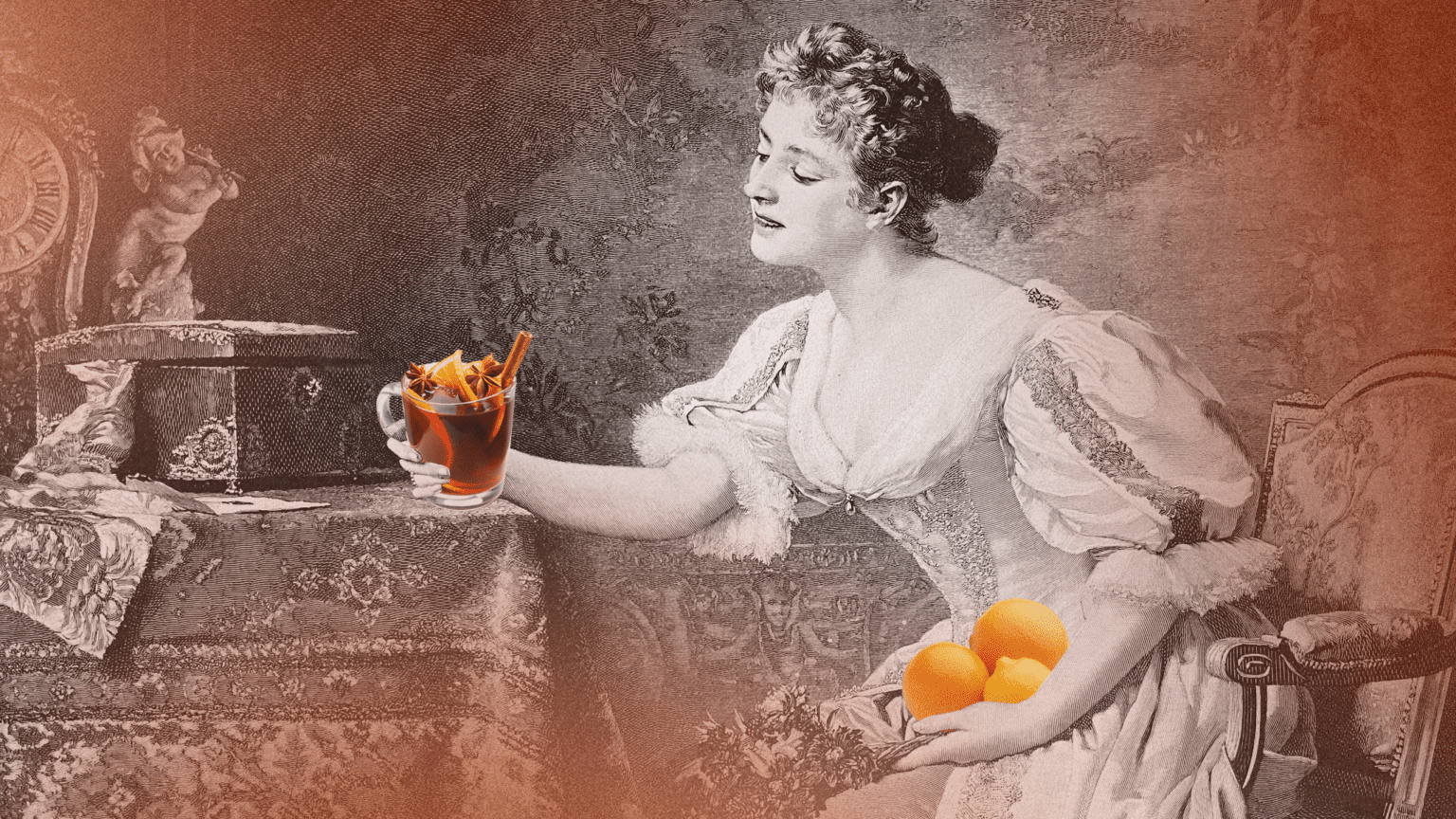
In the Middle Ages, people viewed mulled wine as almost medicinal. They believed that the added spices made them healthier. They weren’t exactly wrong. And, alcohol was at times safer than the water that was readily available to those that lived in cities, especially during the Black Death.
Ancient Greece used spiced wine as a medicinal tonic for warming the body. The Greeks called this elixir hippocras, after Hippocrates of Kos, the physician known as the “father of medicine”.
When taking a dive into the ingredients, one can see how mulled wine is a form of medicine and the health benefits it can provide.
Red wine offers many health benefits. It supports cardiovascular health and helps fight inflammation. Because it contains resveratrol, it can help sharpen your mind and fights off free radicals. Red wine may also help to improve your mood.
A study, conducted at Curtin University in Australia, found that regular consumption of red wine reduced the risk of developing cardiovascular disease by lowering LDL cholesterol levels in postmenopausal women by 8 percent and increased HDL cholesterol levels by 17 percent.
When used as a sweetner, honey has many benefits. It is a natural antibiotic and helps to activate the medicinal properties of the other herbs and spices.
Cinnamon brings warmth into the digestive organs and extremities. It also helps to lowers blood sugar levels and helps remove digestive parasites.
Orange peel, which is high in vitamin C, can improve our immune system. You can learn more about the health benefits of orange in my blog post 21 Reasons to Get Orange Peel Into Your Diet.
Cloves are anti-parasitic and help remove worms from the gut and improve circulation. But don’t add too many or you will numb your taste buds.
Cardamom brings strength to the digestive tract.
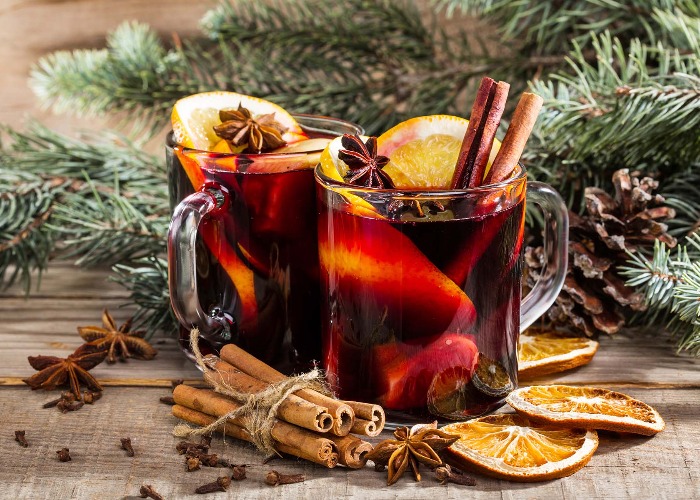
So why is mulled wine such a popular drink during the holidays and at Christmas?
This tradition appeared in the 1890’s, when outside German markets offered this warming beverage to their shoppers. Within a few years, it became a contest as to who could create the best tasting mulled wine in the market.
Charles Dickens, the writer, included a passage which mentioned Smoking Bishop, a popular mulled wine of the day, in his classic A Christmas Carol.
And what do you eat with mulled wine? There is nothing better to serve it with than shortbread, speculoos, or a cinnamon or almond cake.
Even though this is considered a holiday drink, Mulled Wine Day is celebrated on March 3.
There are a lot of variations when it comes to the recipes and ingredients for mulled wine. But here is a list of the most common items needed in making this beverage.
There is no shortage of recipes for mulled wine. Just Google it and see how many pages of recipes pop up. It’s really no surprise since this beverage has been around for centuries.
Once you start looking, you’ll be amazed at the variety of recipes that are out there. What is even more amazing is that once you know how to do it, you can start creating your own versions of mulled wine. There really is no wrong way.
To get you started, I put in a few links to some tasty mulled wines below. Once you try one, let me know what you think in the comments below.
CHEERS!
https://www.myrecipes.com/how-to/cooking-questions/what-is-mulled-wine
What is Mulled Wine? How to Make it and 5 Easy Recipes.
The mulled wine: origins and preparation advice
The History of Mulled Wine
https://www.nenaturalhealthcentre.com/uploads/2/5/8/6/25863178/mulled_wine.pdf
https://www.goodhousekeeping.com/health/diet-nutrition/a33145/drink-wine-every-day/
Benefits of Red Wine for the Heart, Body & Mind
Elderberries have been all the craze for some time. People make syrup, jam, tea and more with these berries.
What I found out in researching elderberries, was that these berries are very special. They are like the secret remedy for colds and the flu!
There are a few types of elderberry plants, but the black elderberry, Sambucus canadensis, is favored. Because of its strong anti-viral properties, it a huge defender against colds and the flu. Thus the reason for being so popular in the fall.

“An anthology is like all the plums and orange peel picked out a cake.” Walter Raleigh
Eat orange peels?
Now most of us will drink orange juice or eat the inside slices of an orange. But the peel? Too bitter!
But before tossing that orange peel into the garbage, continue reading and be amazed!
The peel has so much to offer us in terms of medicinal properties and keeping us healthy. It has been used for thousands of years to treat different ailments.
Orange peel contains a large amount of Vitamin C and is a powerful antioxidant.
So lets learn a bit about how orange peel is good for us, make a cup of orange peel coffee, look at ways to get orange peel into your diet, and lastly, check out other ways to use up those orange peels.
In Need of Organic Orange Peels?
You can save the peels from organic oranges you purchased and dry them yourself. Easy peasy.
Or you can purchase them from Mountain Rose Herbs, who stand for organics, fair trade, sustainability and more.
Orange peel, along with other citrus fruits, have been used for thousands of years as medicine.
It contains flavanoids, Vitamins A, C, B5 and B6, calcium, riboflavin, thiamine, niacin, folate and dietary fiber.
Lets look at the 21 ways orange peel has been used over the years to help with overall health and how you can benefit.
1. Diarrhea
2. Indigestion
3. Constipation
4. Cleansing
In Traditional Chinese Medicine (TCM), the orange peel has been used for hundreds of years to help with gas, bloating and other digestive issues.
The orange peel contains pectin, which is a beneficial carbohydrate that the good bacteria in your gut feed off of.
5. Colds
6. Coughs
Because of its antibacterial, antifungal and antiviral properties, orange peel is a great for warding off cough and colds. It helps in getting excess phlegm out of the lungs.
7. Weight Loss
8. Obesity
9. Athletic Performance
A team of scientists in Taiwan researced the effects of four different orange peel varities, and found that they remarkably reduced the production and accumulation of triglycerides in fat cells.
10. Cholesterol
When taking in large amounts of orange and orange peel, the HDL increases, while the LDL decreases, which is great for those with high cholesterol.
11. High Blood Pressure
The potassium in orange peel plays a huge role in lowering the risk of high blood pressure.
12. Anxiety
13. Stress
14. Hypertension
15. Depression
Studies are now showing that by just inhaling the aroma of orange and orange peel, can have an uplifting effect on people.
16. Arthritis
17. Rheumatism
Orange peel contains powerful anti-inflammatory agents that help with swelling, redness and inflammation.
18. Asthma
19. Oral Health
20. Hangovers
21. Poor Circulation
So how can you get more orange peel into your diet? Let’s start with a cup of Orange Peel Coffee and then look at more ways to use those peels.
This coffee recipe is not only easy to make, but so good to drink!
Coffee has always been associated with caffeine and a morning pick-me-up. This cup of freshness is much more.
Smelling the citrus aroma while the orange peel is steeping in the hot coffee is just up-lifting.
Are you ready for some?
Here is the recipe for Orange Peel Coffee. I’ve taken it from HERE and adapted it to my tastings. That’s what makes this recipe so wonderful! You can adjust it to your likings.
Orange Peel Coffee
Ingredients:
Directions:
Enjoy my fun little video below on making Orange Peel Coffee!
Besides eating orange peel, there are a number of other uses for orange peel, so don’t throw it out! Unless it’s into the compost pile.
Here is a list of uses:
https://www.motherearthliving.com/cooking-methods/citrus-peel-medicine-coffee
https://www.webmd.com/vitamins/ai/ingredientmono-908/sweet-orange
https://www.motherearthliving.com/health-and-wellness/citrus-peel-medicine
https://www.linkedin.com/pulse/25-proven-health-benefits-orange-peel-tea-dr-paul-haider/
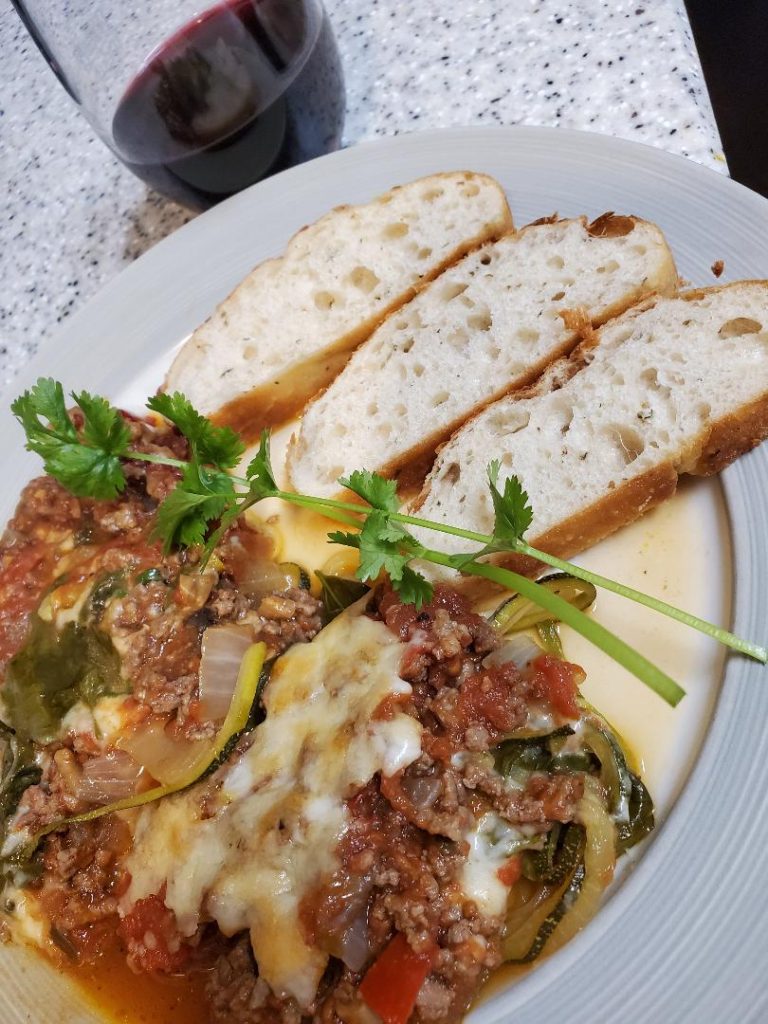
I’m the type of person who doesn’t like to waste anything I don’t have to. So when I saw all the lambs quarters in my mom’s garden that she wanted pulled out, I knew I had to step in and utilize them.
Now my mother tends a very large garden, and always has. With the help from a few of my siblings, we help plant and take care of it through the summer. Then in the fall we all benefit from our labor of love with some wonderful vegetables. This is a wonderful time for us to bond as siblings and family as well.
It is always fun to think ahead to the harvesting and canning of the delicious vegetables. Some of our favorites are making salsa with all the tomatoes and peppers and booyah, which utilizes just about every vegetable from the garden, with the addition of chicken.
Right now we are in the middle of summer and working on maintaining the garden, such as watering and weeding. Yes, I said weeding. But not just any weeding.
In this garden are many “weeds” (according to my mother), such as lambs quarters and amaranth. So instead of just pulling and tossing the weeds, I collect them. This time I collected lambs quarters for eating.
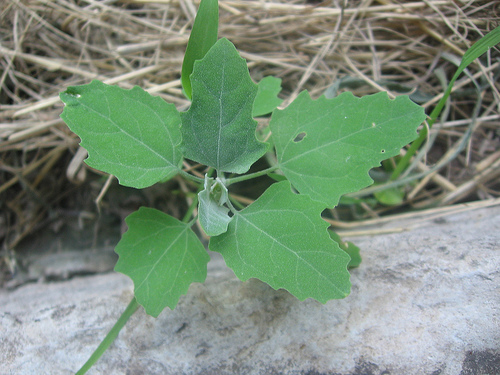
Lambs quarters, also known as wild spinach, is very nutritious and can be eaten like any other green. It is one of the most common weeds you will find in gardens and backyards.
So you definitely don’t want to toss out such a plant! Well, I least I don’t.
I took the lambs quarters I collected and created a casserole dish that is absolutely divine! And I wanted to share it with you so you can enjoy this wonderful plant too.
So the first thing you will need to do is to gather about 5-6 cups of lambs quarters leaves. If you have little ones, this would be a great way to have them help you out. They can help pick leaves for you! Once picked, rinse them and let drain.
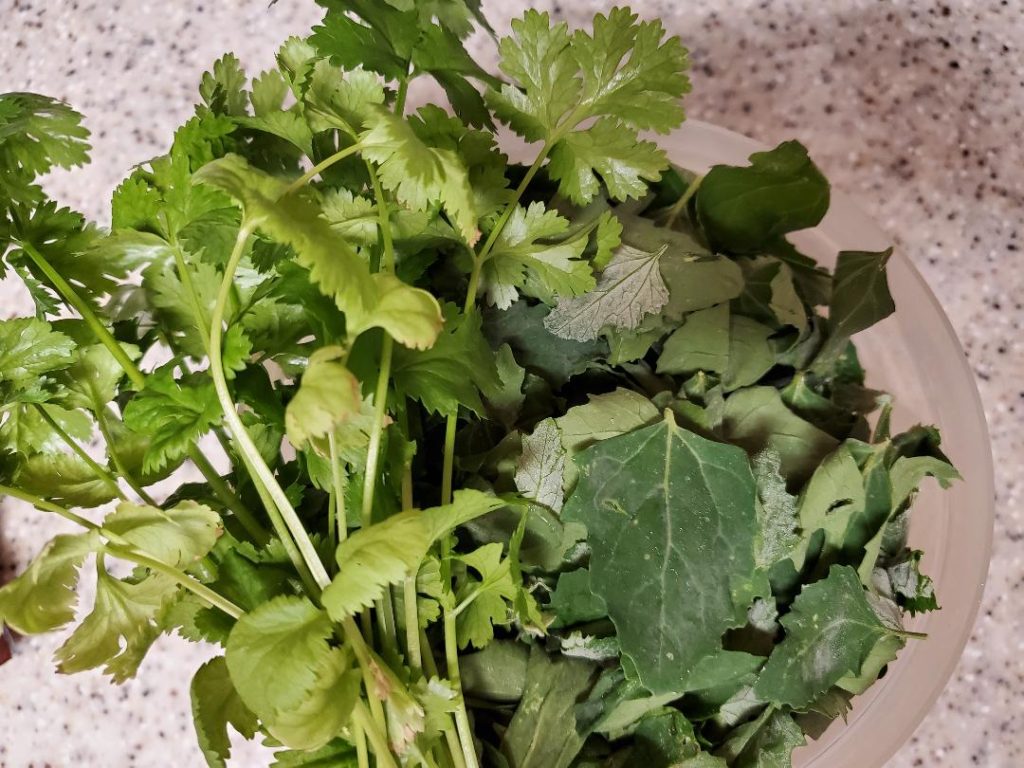
Then, over medium heat, brown the ground beef in a fry pan. I add in the onions and mushrooms when the hamburger is almost done browning. Once the onions are translucent, drain off any excess grease.
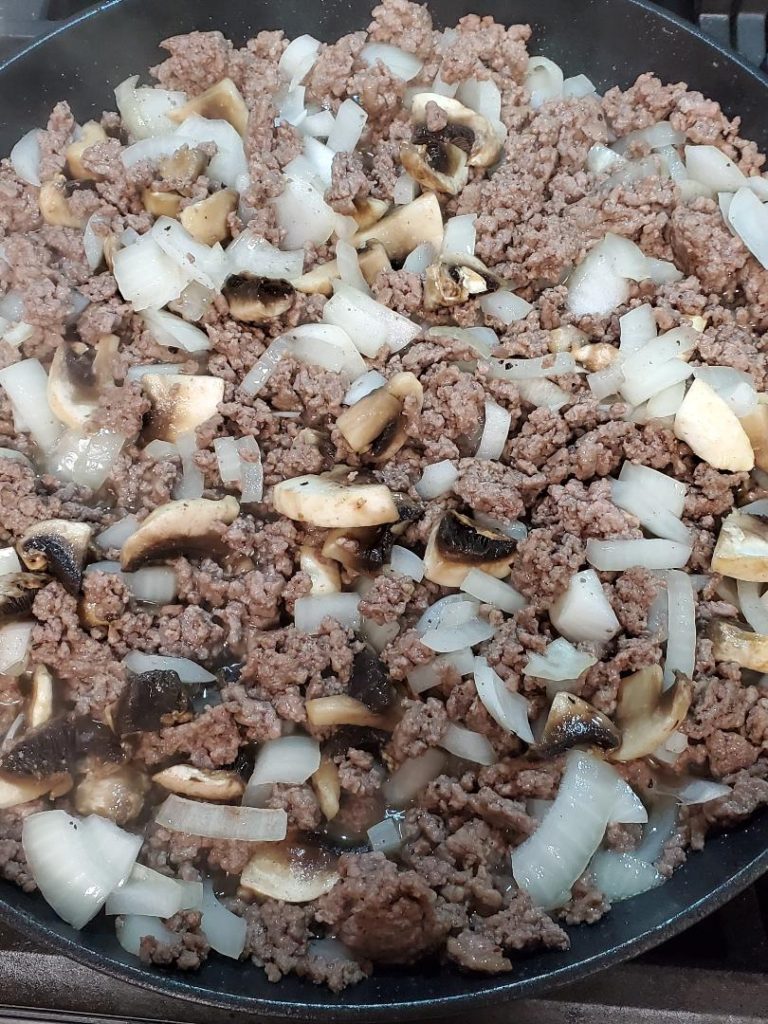
While the ground beef or hamburger is browning, you can prepare the zucchini. I like to spiralize mine. You can either buy it spiralized, or buy whole zucchini and do it yourself. I like this spiralizer. It is simple to use and cleans up nicely.
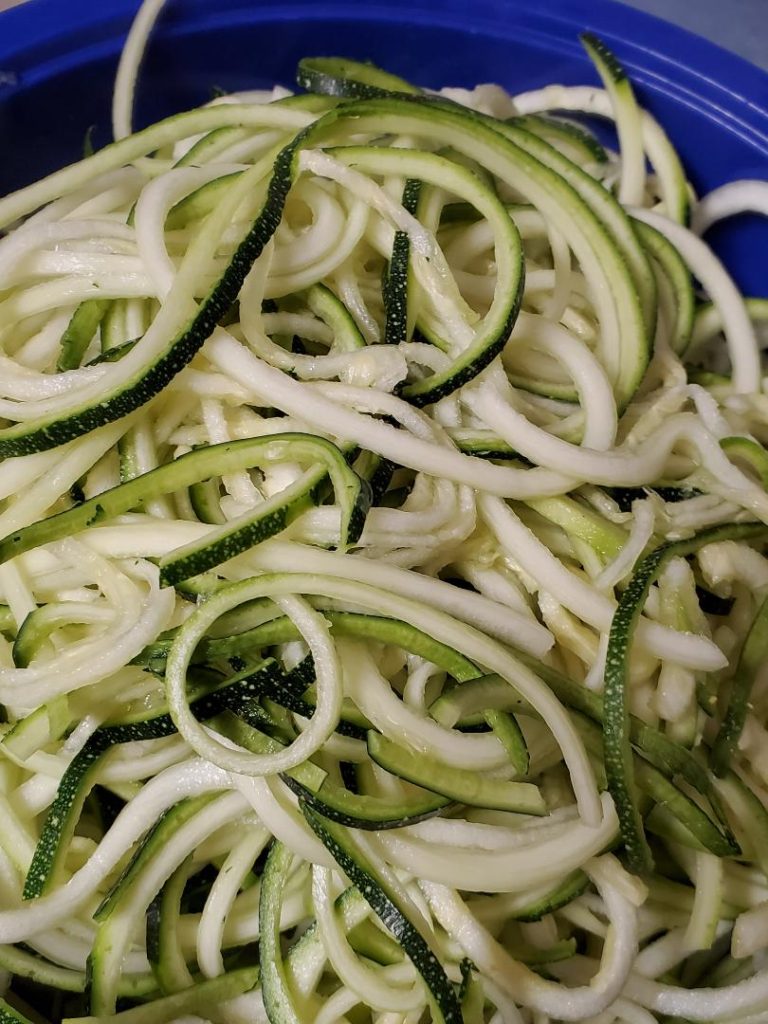
Now you can start pre-heating your oven to 350 degrees.
Once you have the ground beef browned and the zucchini prepped, it is now time to put your casserole together.
Get out a glass casserole dish or cake pan. Spread a couple scoops of spaghetti sauce on the bottom to help prevent the other ingredients from burning to the bottom. Then start layering the zucchini, ground beef, lambs quarters, cilantro, cheese and sauce.
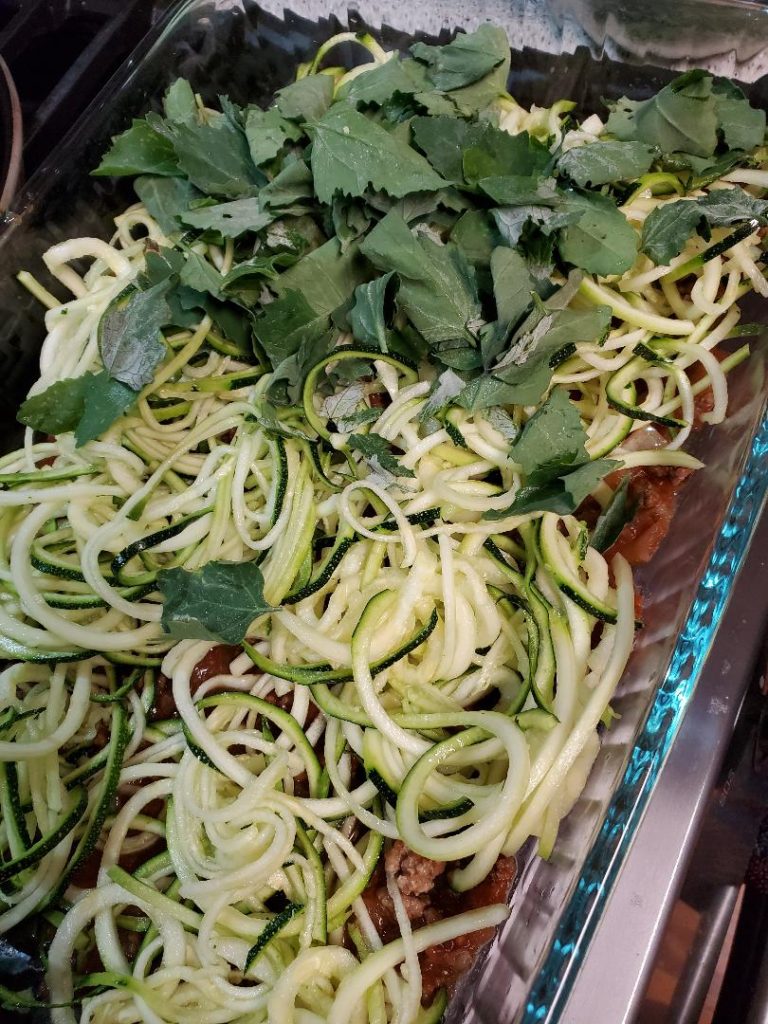
Keep layering till all ingredients are gone. Top the dish off with cheese. You can use more or less cheese, however much you prefer. I usually end up with about 2 layers of each ingredient before the pan is full.
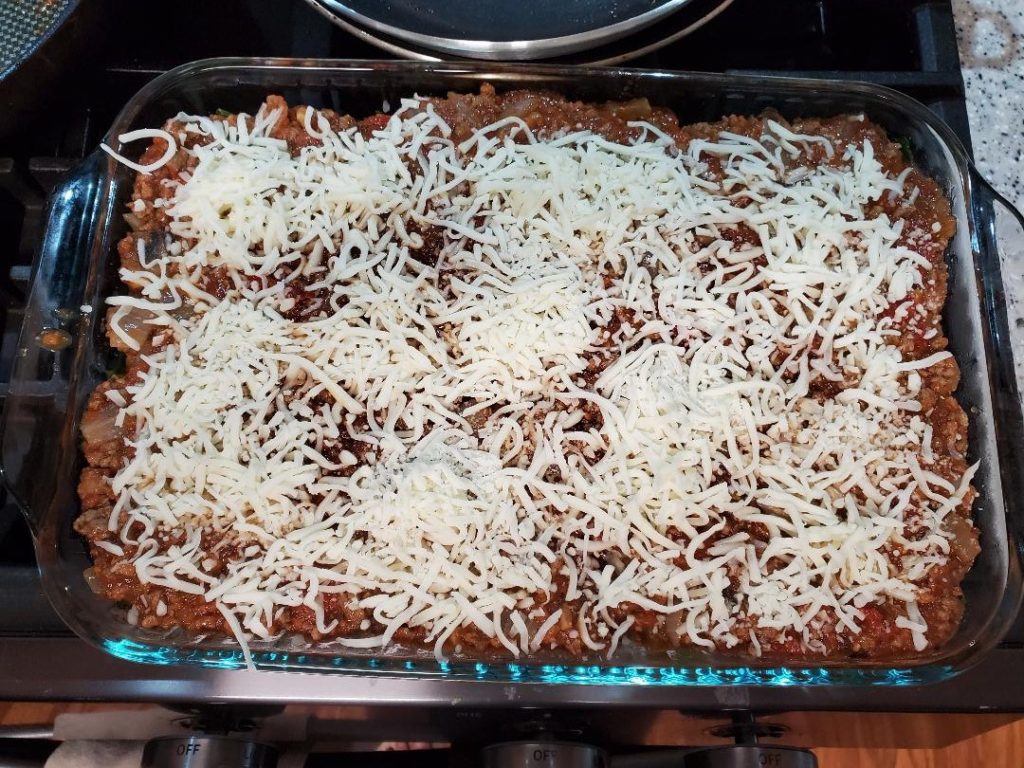
Once the oven is pre-heated to 350 degrees, put the casserole in the oven to bake for about 30-45 minutes, or until the cheese is starting to turn brown.
I serve this with some garlic bread and a side salad. It is a very nice way to enjoy an Italian style dish without the pasta and carbs.
And of course, I have to have a nice glass of red wine to accommodate the meal.
I hope you enjoy this simple and nutritious dish as much as I had fun creating it.
Bon appetit!
[recipe title=”Lambs Quarters and Zucchini Casserole” servings=”6-8″ preptime=”30 mins” cooktime=”30-45 mins” difficulty=”easy” rating=”★★★★★” image=”https://www.theherbalcache.com/wp-content/uploads/2020/06/out-of-the-oven.jpg” description=”A healthy take on lasagna without the pasta.”]
[recipe-notes]
Credit: theherbalcache.com
[/recipe-notes][recipe-ingredients]
– 1.5 lbs ground beef
– 1 medium chopped onion
– 1/2 cup mushrooms
– 2 zucchini, spiralized
– 5-6 c. fresh lambs quarters
– 1 c. chopped cilantro
– 1 jar spaghetti sauce (I like to use my homemade sauce)
– 3 c. mozzarella cheese
[/recipe-ingredients][recipe-directions]
1. Brown the ground beef; add the onion and mushrooms and cook until onions are translucent.
2. Layer the hamburger mixture, zucchini, lambs quarters, cilantro, cheese and sauce. Add another layer of cheese on top.
3. Bake at 350 degrees for about 45 minutes or until cheese starts to brown up.
[/recipe-directions][/recipe]